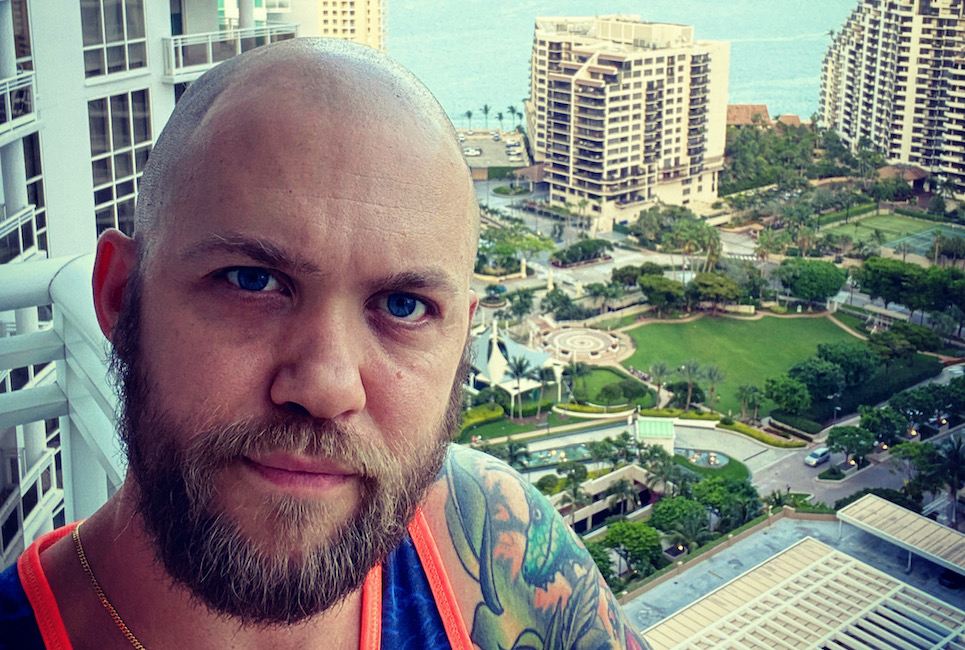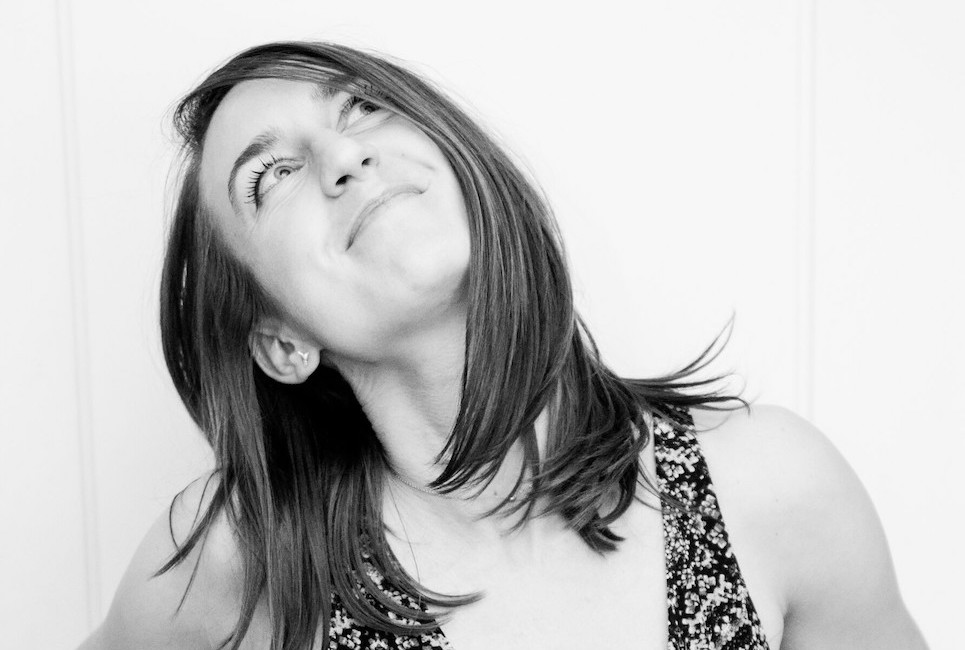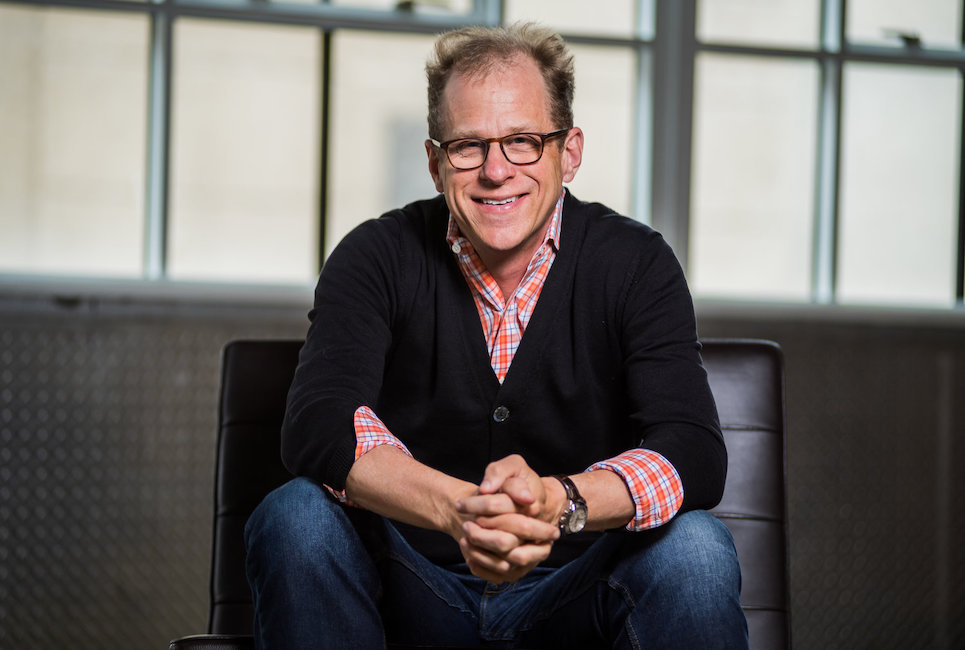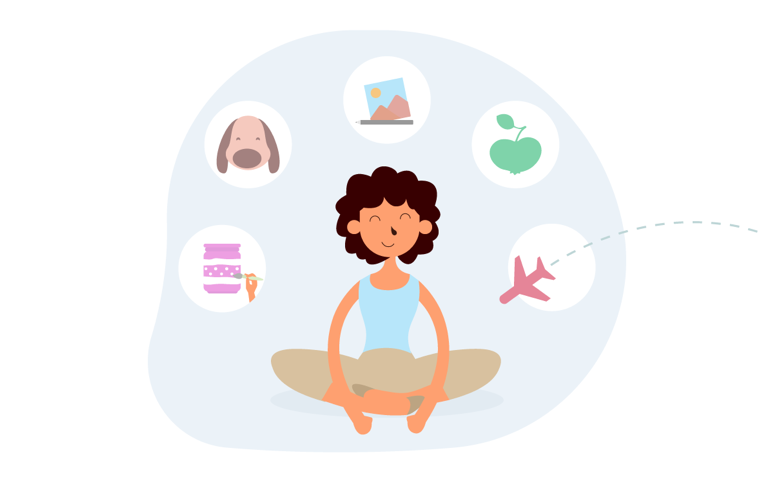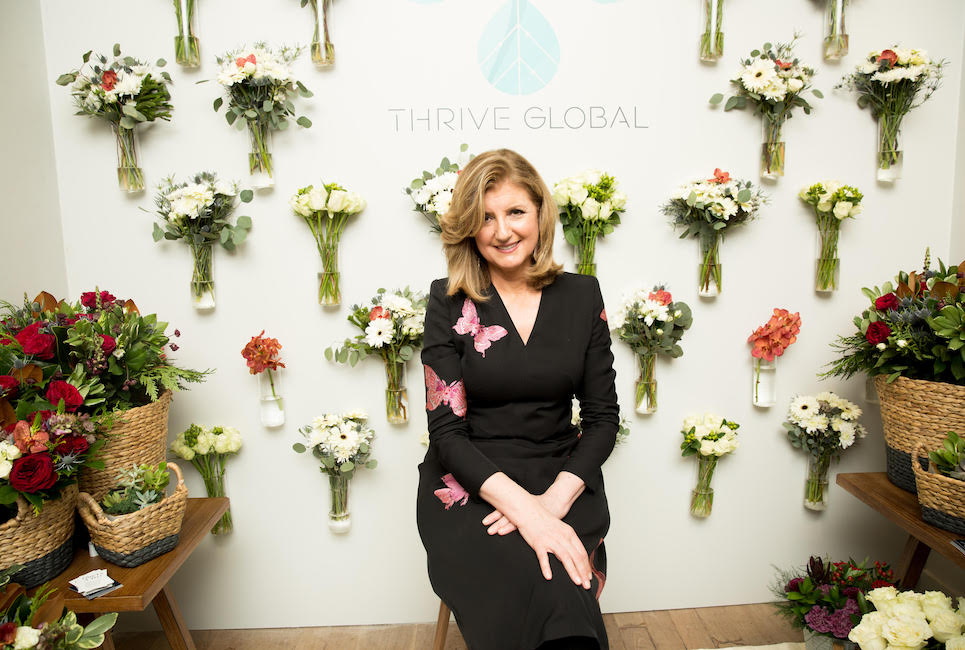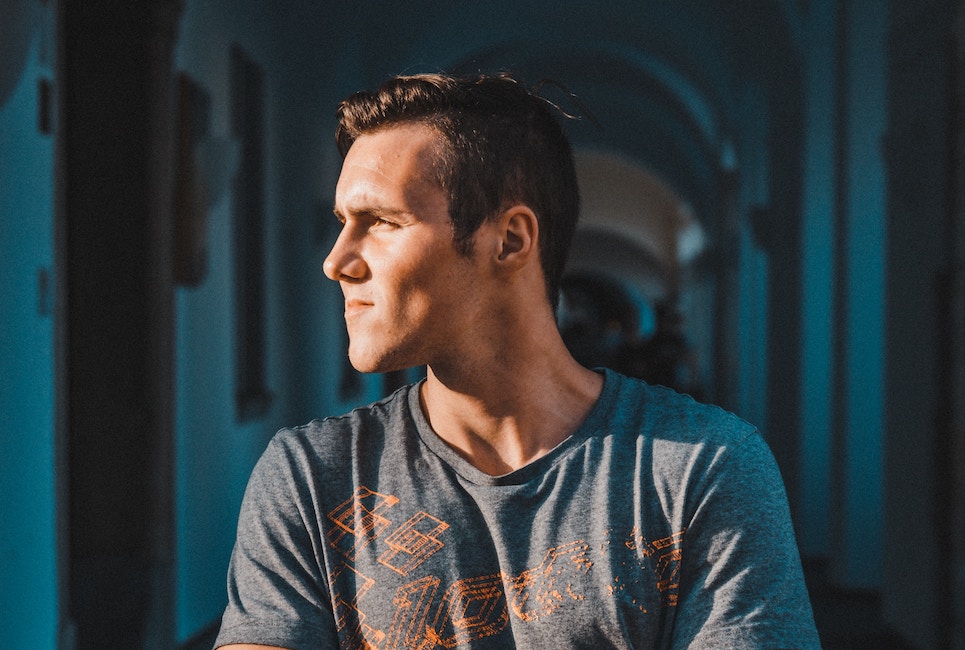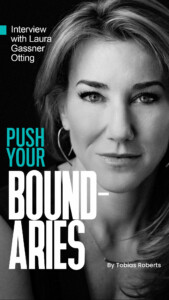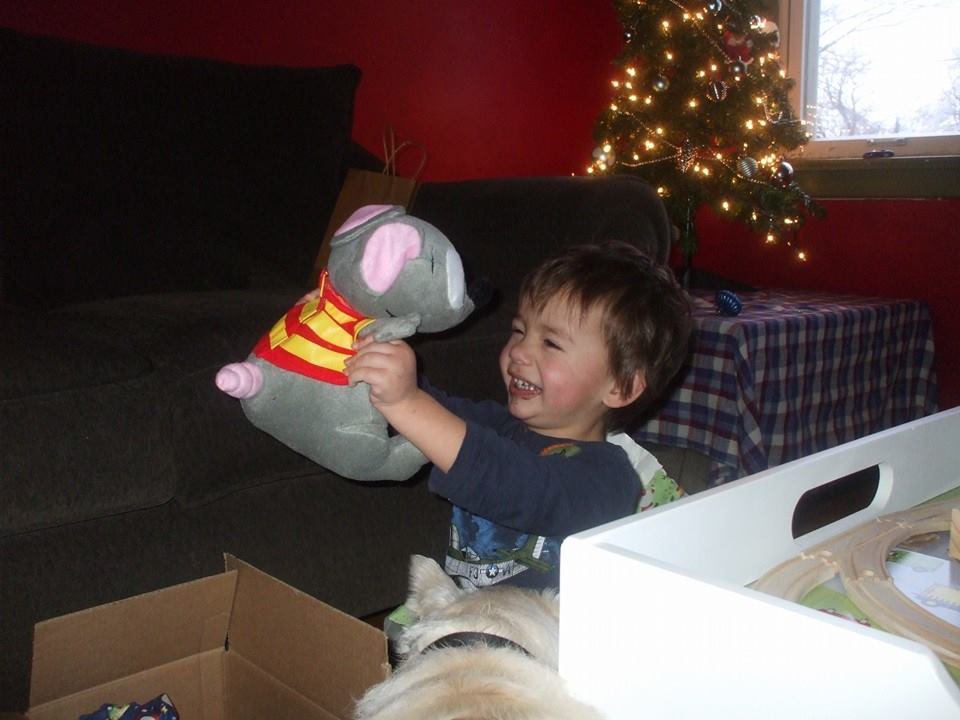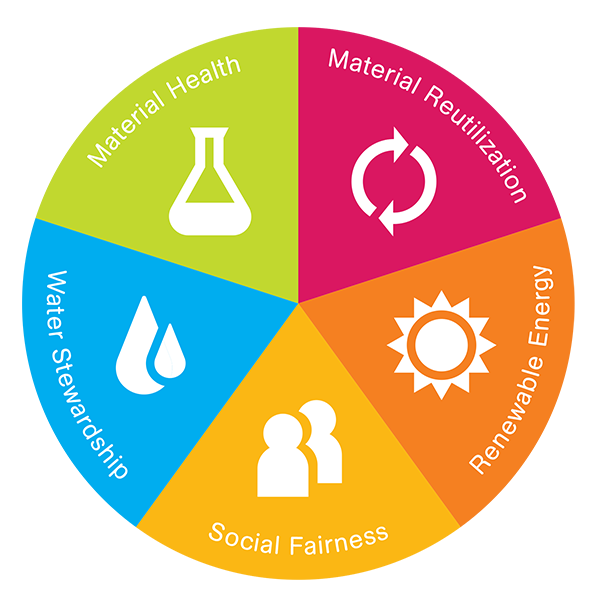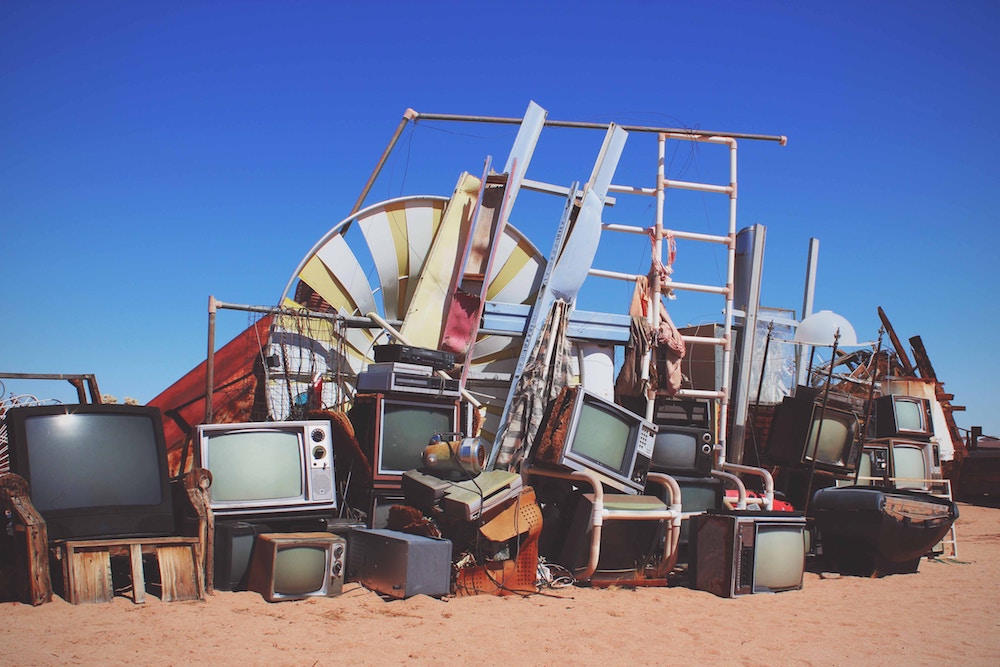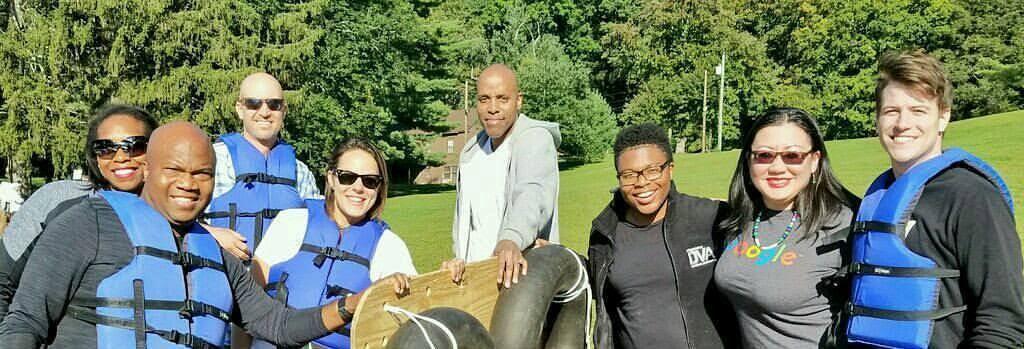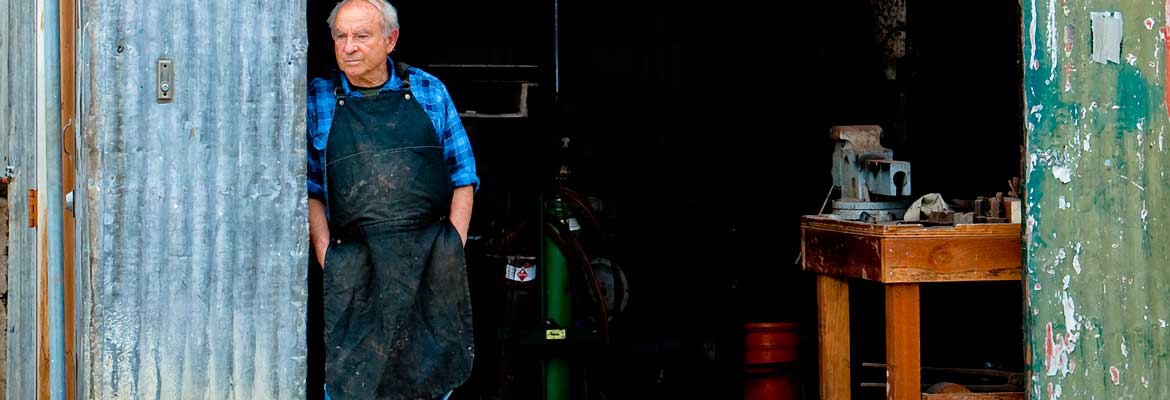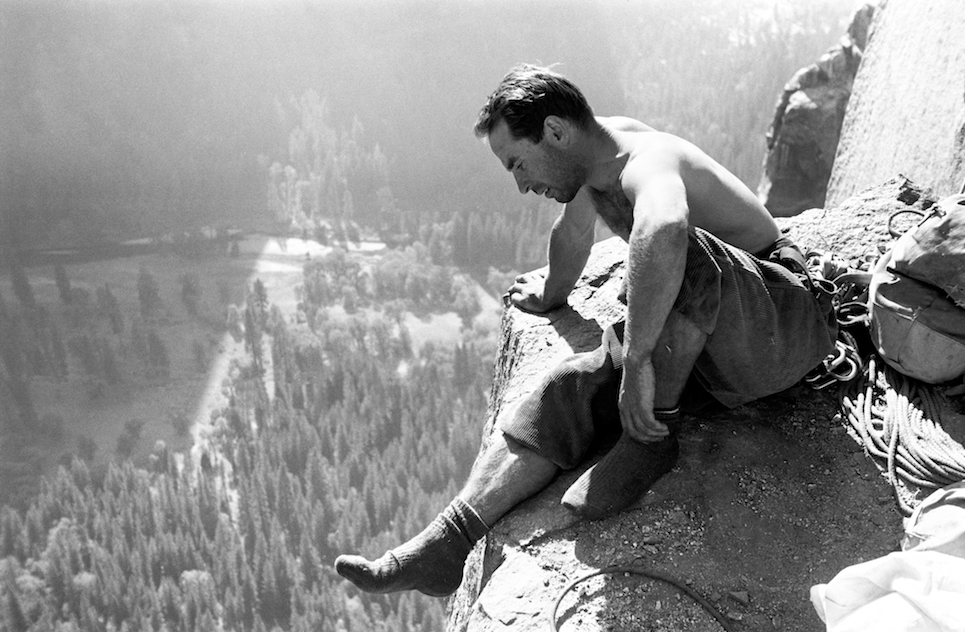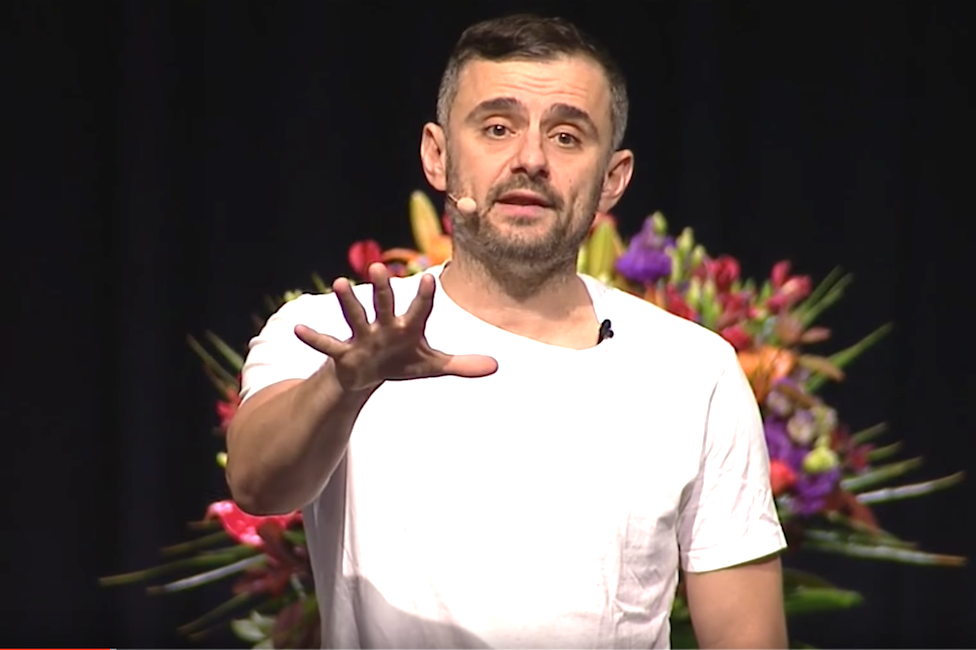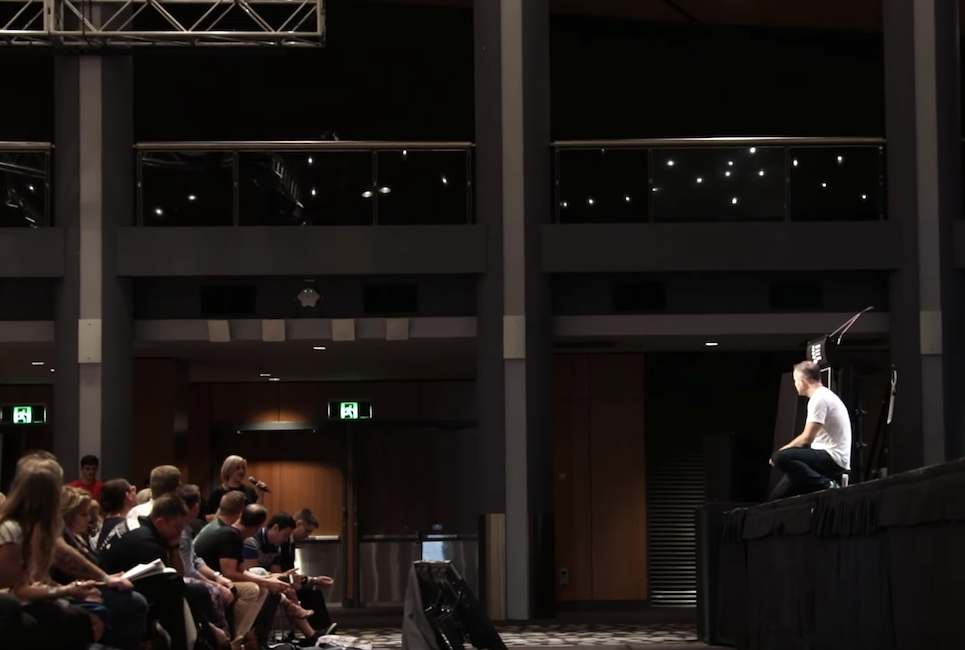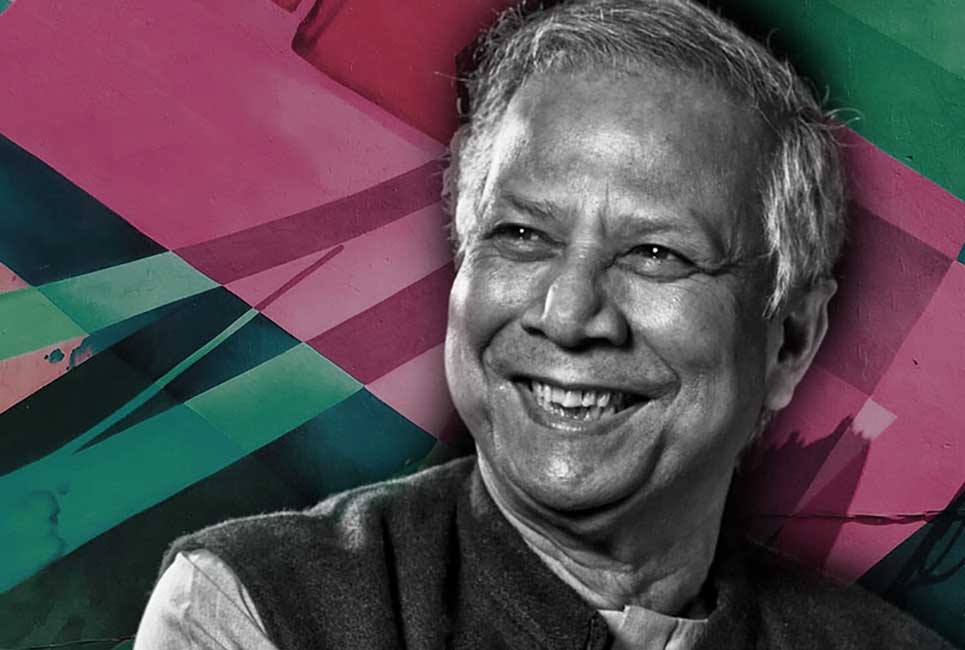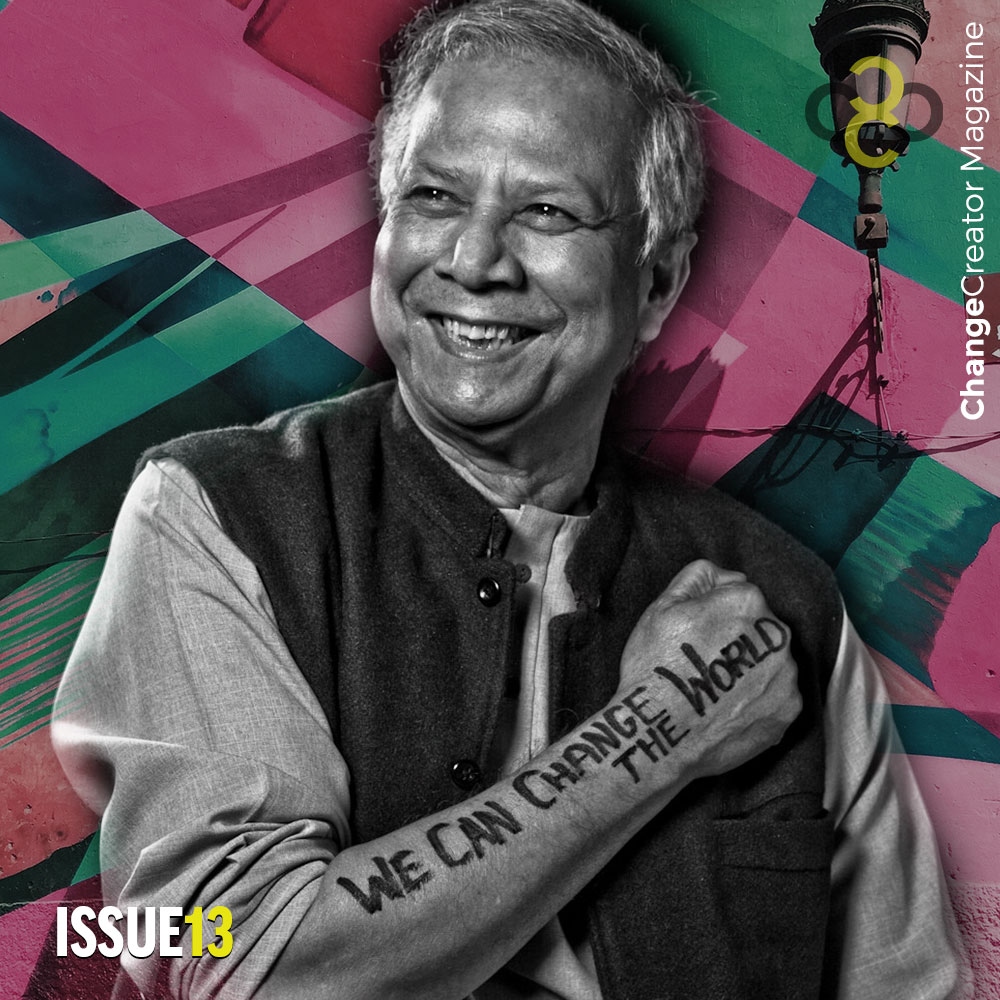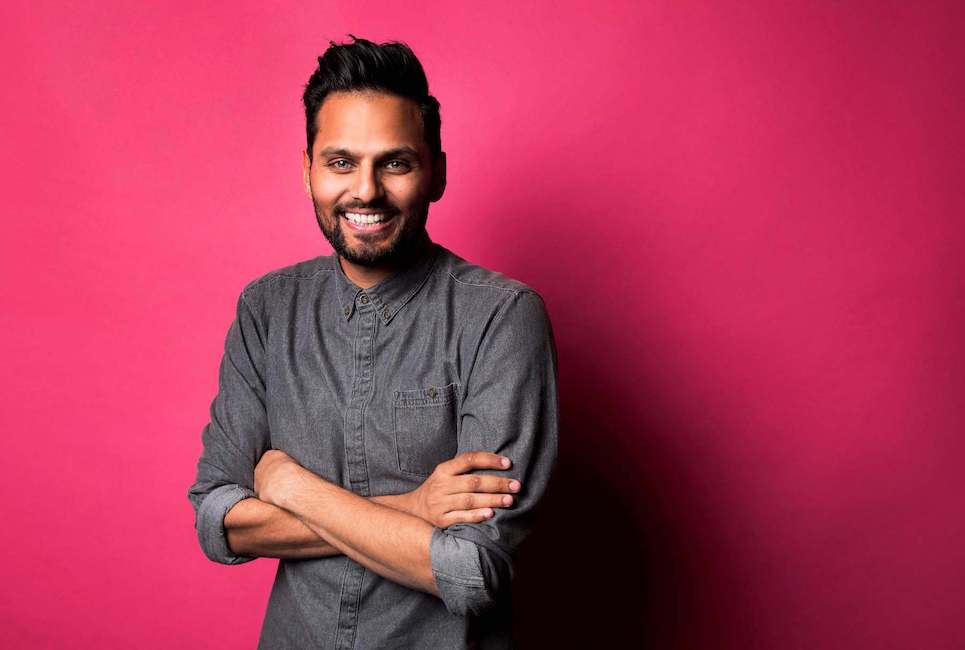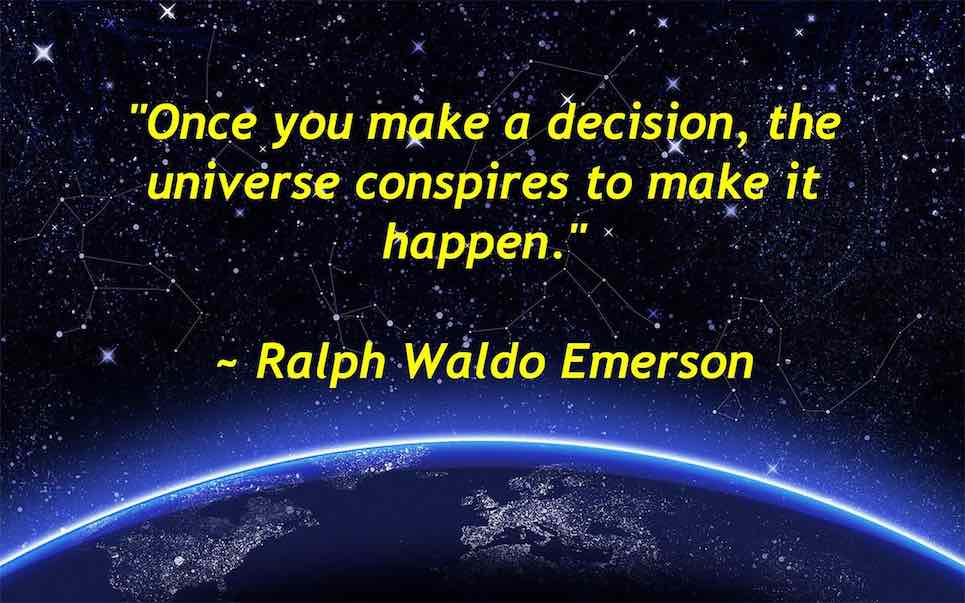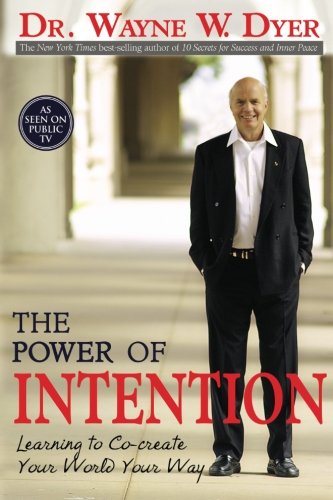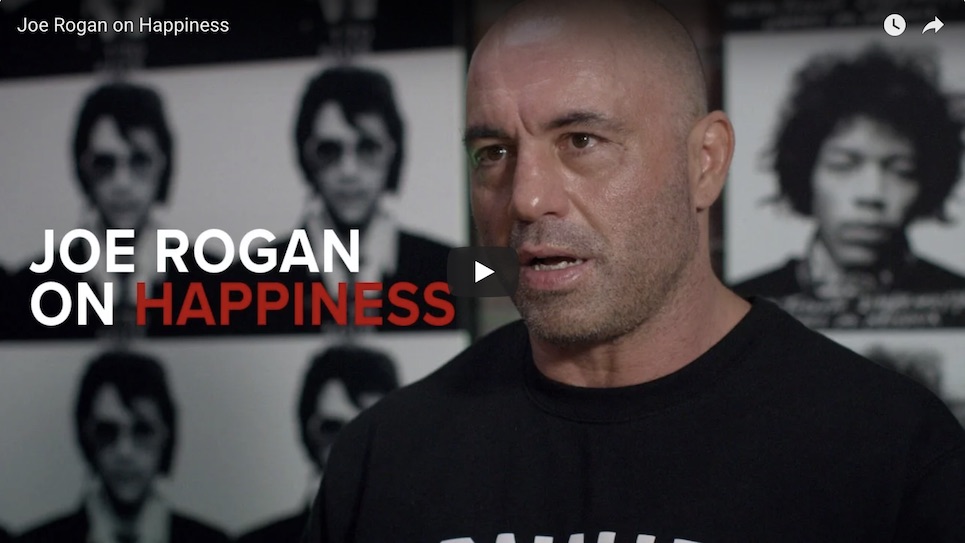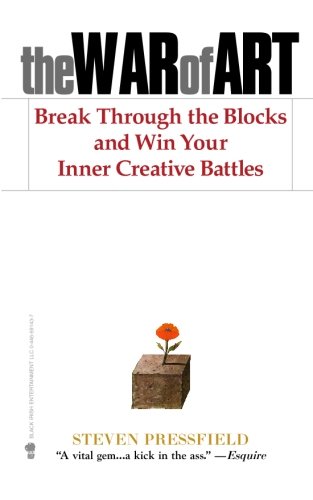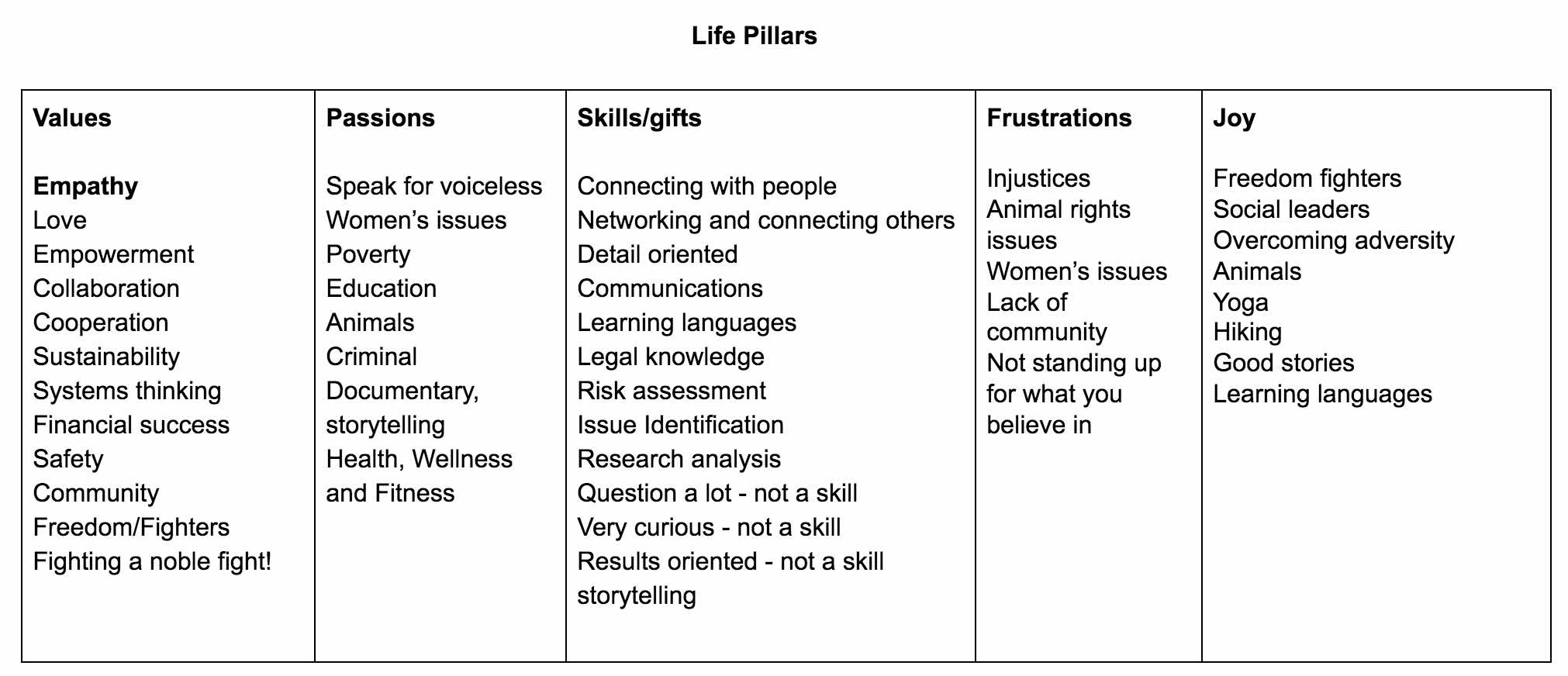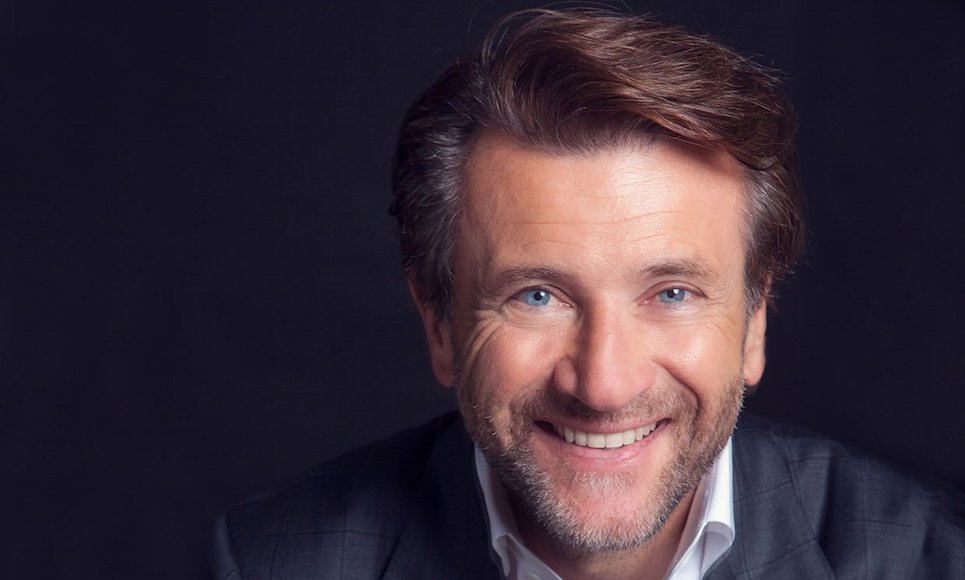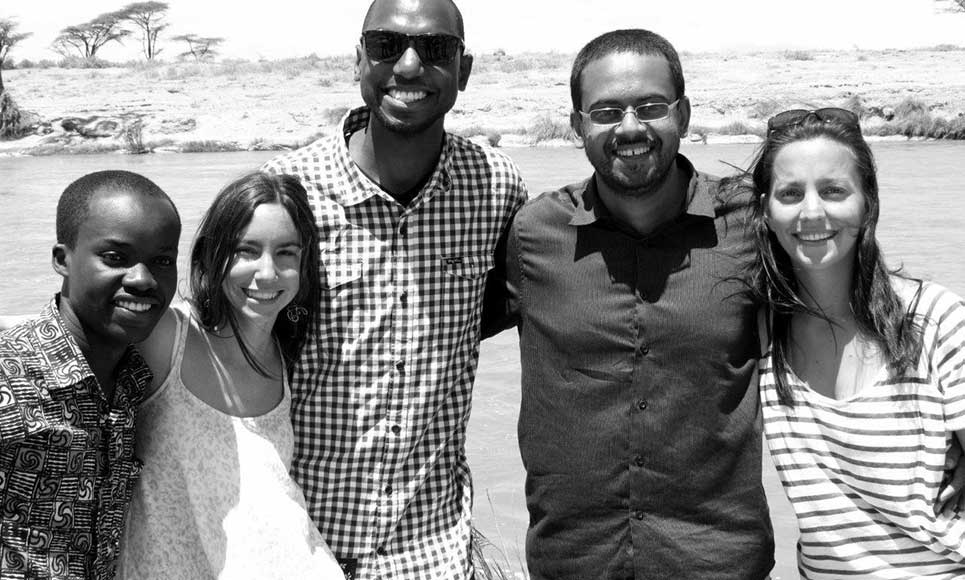Listen to our exclusive interview with Michael O’Brien:
Subscribe to this show on Spotify | iTunes | Stitcher | Soundcloud
Michael O’Brien’s last bad day was July 11, 2001. He found himself on his bike, hurtling down a New Mexico road and into the path of an SUV travelling at 40 miles per hour when his life took a turn for the better.
I remember the sound of me hitting his grill…the thud I made as I came to the asphalt below, the screech of his brakes.
Wanting to make the best of the situation, Michael promised himself that if he survived, he’d stop trying to chase happiness. He even had the wherewithal to throw in a bit of humor and asked the EMTs who were working on saving his life, “Hey, how’s my bike?”
Until that day, Michael saw his role in life as that of playing Superman. He was the leader. He was playing Superman at work, he was playing Superman at home, and he felt he had to have all the answers. He suffered from what he calls comparisonitis — the fixation on comparing what one has to what others have. And it was taking its toll. He was chasing some sort of ideal on a hamster wheel and getting nowhere and finally made a shift where he realized he could live by his own script and not by the script he thought society wanted him to live by. He began living his life with much more awareness. He made a concerted effort to do purposeful work that was meaningful and to do it with gratitude and a connection to others.
If you can worry yourself sick, why can’t you think yourself well?
Michael put a lot of faith in the belief that if he lived his life this way, there’d be a positive downstream impact on his success. He started the day after his accident: He wheeled himself to a quiet spot in the hospital and practiced mindfulness. He he made a point of fostering his gratitude every evening by listing all the things he was grateful for. And he focused on looking at what was good in the world as a way to look forward to and embrace tomorrow and fuel his recovery.
Not for Everyone
Michael is quick to point out that his strategy — his collection of rituals — is not for everyone. Often, we try to follow what successful celebrities or businesspeople adopt as their strategy. They do very well for themselves and so we assume that in order for us to become successful, we simply need to follow in their footsteps. But what works for them won’t necessarily work for us. Michael cites Tony Robbins as an example: Robbins, a successful life coach and motivational speaker, swears by a morning jump into a frigid plunge pool. But if you’re not a morning person and detest cold water, you’ll soon realize this is bogus (and not at all enjoyable) and that it’s not helping you move forward. And that’s the point. We all need to find our own things that help us move forward.
No More Bad Days
When Michael O’Brien refers to July 11, 2001, as his last bad day, he in no way means that life has been perfect since then. His goal, and his wish for all of us, is to be able to quickly rebound from the bad moments life throws at us. And as entrepreneurs, we’re going to have a lot of bad moments. His focus is to keep a bad moment from gaining any more fuel than it should so that it doesn’t turn into a bad day. The result: no more bad days. That’s not to say his life hasn’t had any challenging moments. But by not giving them any more energy than they deserve, he prevents the day from getting hijacked. Because, he warns, once that first day gets hijacked by a bad event, the next day gets hijacked, too. And before you know it, you’re in a pattern of bad days.
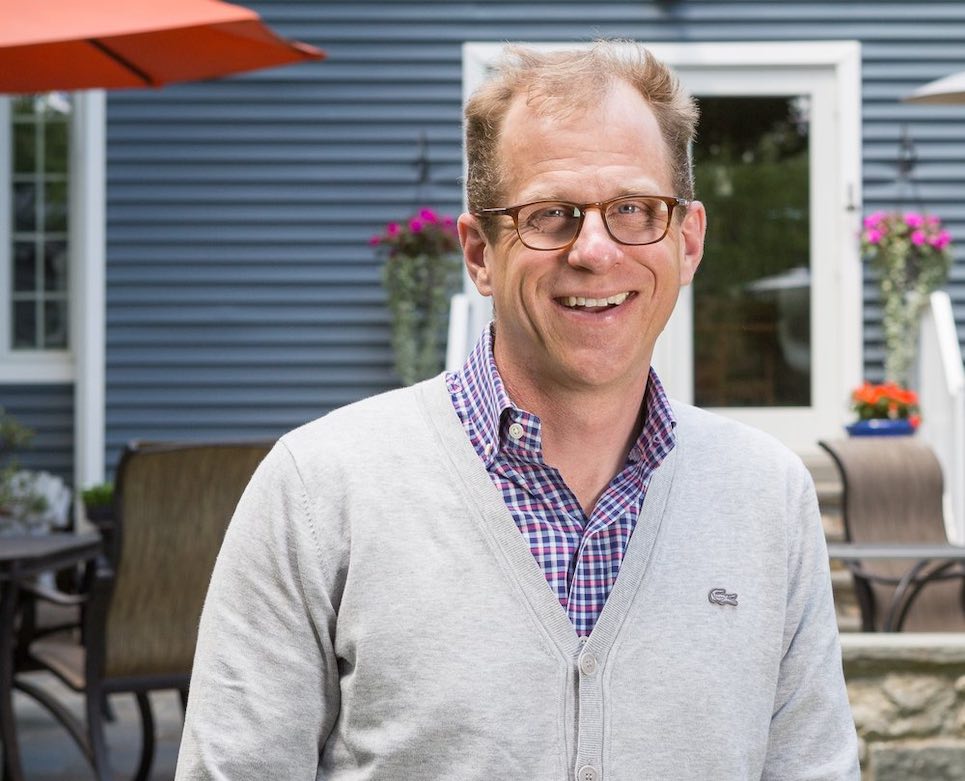
This premise reflects the work Michael does with his clients. He discusses with them ways in which they can become resilient in business so that they know how to respond quickly when those challenging moments happen. He stresses that how people respond to stressors is everything and so hopefully, with the help of some coping strategies, the intensity with which they respond is reduced over time, as is the number of times they are triggered.
Lessons Learned
Michael shared with us that he has learned a lot from his accident and the way in which it has transformed his life. He has started asking potential partners about their values. He is now much more focused on what their passion is and what they stand for as opposed to whether or not they can help him and his business get to the next level. He stresses that this is a critical part of being an entrepreneur. He adds that as entrepreneurs, we have self doubt creep in from time to time — whether our business is worth $50,000 or $500,000. And it’s good to have a team of like-minded people around you cheering you on.
At the end of the day, as entrepreneurs, we all have the same issues: the self doubt, the incorrect assumptions, and making stuff up in our storytelling that doesn’t serve us well. Michael’s goal for himself and for others is to take a collective deep breath, look at the big picture, and begin to appreciate what each new day brings.
You can read more about preventing bad moments from turning into bad days in Michael’s new book, My Last Bad Day Shift and at michaelobrienshift.com.
We also recommend:
Transcription of Interview (Transcribed by Otter.ai; there may be errors.)
Adam Force 0:12
What’s going on everybody? Welcome back to the Change Creator podcast show. If you missed last week’s episode, it was with Ethan Beute. He’s done a lot of amazing work and we talked about rehumanizing your online business. Really a good one. So if you guys want to check that out, swing back over. We’re on Spotify, SoundCloud, all those spots, iTunes, you name it. And this week, we are going to be talking with Michael O’Brien. And he’s an inspirational speaker and he does a lot of corporate coaching. He had this really crazy experience — a life altering event — that completely shattered his worldview. And he’s going to walk us through it, and it just changed the way he lived his life. He’s actually the author of a book that was very popular called “Shift: Creating Better Tomorrows.” He also has written the best-seller, “My Last Bad Day.”
Okay, and so he is on a mission right now to help 1 million people have their last bad day. So lots of really inspirational insights here and good tidbits on improving your life and making sure that you have your last bad day. So yeah, so stay tuned for that, it’s an exciting discussion with Michael. One update that we have is regarding the Captivate Method. So the doors have been closed for the Captivate Method, but we plan on reopening them now in October. So that is the goal; we’ll get a more specific day. We are aiming for October 1, but you know how these things go. So let’s just say October, 2019, the Captivate Method will be open, and we’re going to start getting people into the new format. So hopefully, that all takes place as planned.
And we’ll keep you guys updated about those things. I think that just about covers it for today, guys. We’ll keep the intro short and sweet. You know how to reach us at changecreator.com. Hit the contact, let us know if you have anything you want to talk about or get involved in. We’re always looking for contributors, guys. We’re looking for contributors for this site and if you have a passion, you’re an activist, your business owner — there’s a lot of things going on the world — share your passion. This is a great platform for you to get involved. There’s an application there for you to do that. Alright guys, let’s dive into this chat with Michael.
Announcer 2:25
Okay, show me the heat.
Adam Force 2:30
Hey, Michael. Welcome to the Change Creator podcast show. How you doing today?
Michael O’Brien 2:34
Good, Adam. Good to be with you, man. I’m totally pumped for our conversation.
Adam Force 2:37
Yeah, no, I appreciate you taking some time to chat. You know, it sounds like you have a really great story and lots of good experience. So we’ll dig into it. But tell me just a little bit. I like to just hear off the bat. You know, what is going on in your world today? What’s the latest? What’s the greatest?
Michael O’Brien 2:55
So with the latest and greatest? I’m pretty stoked for the next two weeks. Because the next week, I’m going to be with a client down in Miami for their sales meeting, doing a couple of keynotes, doing a little facilitation and hosting. But then the week after, I get to go up to Nova Scotia, for a week long bike ride through Nova Scotia for basically Multiple Sclerosis care, a great organization called Can Do MS. They’re based in Colorado and I’ve raised money for them. And they do some excellent work for people dealing with multiple sclerosis current day versus like looking for new treatments. So it’s like in the moment, and so we’re going to ride around, you know, the northern part of the world, all in an effort to change people’s lives, which is pretty cool.
Adam Force 3:44
Yeah, that sounds pretty fun. How long is…how many miles is this bike ride supposed to be?
Michael O’Brien 3:50
So it’s…we’re going to ride for six days. It’s going to be like 60 miles a day. And you know, so the good news is like we ride a lot. We eat a lot. Now, we might have a might have a beer or two and then we sleep a lot. But you know, going up there in, you know, in the fall, it’s going to just be absolutely beautiful. I just can’t wait. It’s one part of the world I haven’t ridden my bike in. So totally stoked. I can’t wait to get up there.
Adam Force 4:18
That sounds like a lot of fun. I just saw something in the news. I was talking to my wife and I was like, Man, this guy, he broke the record for running 100 consecutive miles and guess what his average mile pace was for 100 miles of running.
Michael O’Brien 4:36
I’m gonna guess so I think it’s going to be a little crazy so I’m going to say like like a seven minute mile.
Adam Force 4:43
6.47
Michael O’Brien 4:45
Wow. That’s nuts. Because like as a former, you know, I used to run before my accident which we’ll touch upon and so that is kick ass man like holy cow.
Adam Force 4:58
I couldn’t believe it. So Anyway, that was a jaw dropper. And when you talked about the doing some…I mean 60 miles a day on a bike is a lot in my world, like I’m not doing that. But a good way to keep in shape, that’s for sure.
Michael O’Brien 5:10
It’s a good way to keep in shape and you know, the cookies and the treats — you have a little bit less guilt as they touch your lips, you know, if you’ve ridden 60 miles so, but it’s really like it’s a great, great group of people and their attitude — I mean, it’s called Can Do MS — it’s just one of abundance. So you get that really cool vibe just being around them. And you think and you can do so much more than you think you can when you’re around them. And that has a beautiful way of just cascading or rippling into other aspects of your life.
Adam Force 5:42
Yeah, yeah. Awesome. So I’d like to give everybody a little background just so they know, you know, where you’re coming from and stuff and you know, you have a story that kind of led you to where you are now in your life. I’d like to just have you kind of walk us through that, you know, in a couple minutes or so, if you can do that background that would be great.
Michael O’Brien 6:03
Yeah, I’d love to share because it’s, you know, seminal to like who I am today. So, I’ll take your listeners back to July 11 2001. I had what I call my last bad day. I was out in New Mexico, riding my bike. I was out there for a corporate meeting sort of sales and marketing type of thing. Like a summit you fly out on Monday fly back on Friday. In between, they try to torture you with PowerPoint. And I thought, Adam, I was going to be the smartest guy in the world. I was going to bring my bike out, get some exercise, avoid the hotel gym. And unfortunately, and also fortunately, later, fortunately, I came around a bend on my fourth lap at a two mile loop. I was going to do about 10 loops for 20 miles before the meeting began. I came around the bend on my bike and an SUV, a Ford Explorer, white Ford Explorer, was coming right at me had crossed into my lane fully.
It was going about 40 miles an hour based on what the police estimate. And I had nowhere to go. And I didn’t have enough time to go anywhere either. Plus I was looking at it, I was like, Oh, he’s going to move, he’s going to see me, he’s going to move, he’s going to see me. And he never saw me and he, unfortunately, never moved. And I remember the sound of me hitting his grill into the windshield. You know, the thud I made as it came to the asphalt below, the screech of his brakes. I remember all that. And I was knocked unconscious. And when the EMTs arrived, they start trying to save my life, and I did I asked them the question that only another cyclist can really appreciate. I asked them, hey, how’s my bike? You know, because I was trying to cut the tension in the situation with a little humor, because I knew my life was in question just based on how they were reacting to, you know, my state of health and I was in the worst pain of my life.
To make a long story short, when they put me on that helicopter to take me to Albuquerque to the trauma center, I promised myself if I lived, I would stop chasing happiness. Because before that period of time, I was playing Superman at work. I thought I had to have all the answers because I was the leader. I was playing Superman at home because I thought as the provider and the dad and the husband, I had to have all the answers. And I was pouring a whole bunch of stress inside. I suffered from “comparisonitis” — like what I had versus what everyone else had. And I always felt I didn’t have enough so I just kept on chasing on that hamster wheel.
And I caught some things every now and again that made me happy but then like any great finish line to poofs and goes away and that was back to chasing. So I knew in that moment that I had to change the way I lived if I was going to have the life I wanted to have so I made that commitment that was gonna stop chasing happiness when they put me on the helicopter and long story short…and you know, I’m, you know not to ruin the end of the story: I live in the end. And I finally had a shift where I realized that I could live life by a different script and not by the script I thought society wanted me to live by.
Adam Force 9:17
Yeah, that’s powerful. I mean, sometimes these experiences can really jolt your perspective and how you see and live your life. And it reminded me of a time somebody told me I was talking about something about, you know, I want this and I want that and he’s like, well, you have to, you have to realize that if you feel that way, that’s the person you are that wants these things, when you get it, you’re still going to be the person that wants. And you’re always going to be in the cycle of wanting no matter what you get. Like, oh, man, okay, and so you mentioned you know, you were in some kind of cycle there of chasing happiness and things like that. So, tell me a little bit you know, from this event, how–what kind of changes did you start making?
Michael O’Brien 10:00
Well, I knew I had to get clear on my priorities, you know, because a lot of it was sort of chasing those external merit badges in terms of, well, I’ll be happy when I get to the next level. And, you know, I see a lot with even entrepreneurs like, Well, once I get this done, then I’ll be happy, or once I get this, you know, like, once I get a TEDx talk, then I will be a successful speaker. You know, you can name 100 different things, Adam. So, one, I first realized that if I was going to get my body healthy, I had to get my mind right, you know, because we often talk about how we worry ourselves sick.
Adam Force 10:39
Yeah.
Michael O’Brien 10:39
Well, in a moment of aha, sort of like my big shift, I was like, Well, if you can worry yourself sick, why can’t you think yourself well? And my big goal at that point in time was I wanted to try to get back to some level of normalcy, and to get back home and out of the hospital. So I knew I had to start shifting my mindset. And that was the really the beginning part of like having more of a mindfulness practice, which I didn’t even know what it was back in 2001. Like, you know, we forget, like a lot of this mindfulness work, meditation, gratitude, being courageous, being vulnerable, all that is relatively new on the scene, thanks to social media.
It’s one of the good byproducts because some of those messages get to be spread pretty quickly. But back then I just knew in my gut, if you will, that I had to get my head right. I had to get my mindset, right. And also, I had to get really focused on what I wanted my purpose to be. And back then I just made a commitment. You know, I’m going to let go of all the titles, I’m going to let go of all the chasing of material possessions. And I want to be the best father and husband and version I could be, which I know sounds somewhat cliche and a little Pollyanna-ish, but really for me, if I could show up that way and sort of fulfill that, get closer to being the best I could be in those areas, then I knew the rest of the success of my life would flow naturally from that.
So I began doing different morning rituals, different evening rituals, but also just trying to live life with much more awareness as opposed to just sort of aimlessly going through life on the hamster wheel, just grinding it out before we knew anything about grinding it out, right? Because we didn’t, we didn’t call it hustling, grinding it back then. But I just knew that I needed to do purposeful work that was meaningful, and do it with gratitude and connection with others. If I showed up that way, if my “how” was right, then I would have the downstream impact that would be successful, you know, and I just…I put a lot of faith in that.
Adam Force 12:47
Yeah. So there’s a lot there. And I’m curious, were there certain routines that worked well for you?
Michael O’Brien 12:58
Yeah, there’s two that were very fabulous. One was–and I remember, the very next day I got up out of my bed early in the hospital, I scooted myself into my wheelchair and I willed myself to a quiet place in the hospital. And I had like all my CDs because I was rocking a Sony Discman back then; there was no iPod yet. So, you know, now everyone’s music is on their phone or through Spotify. But I had about 10 CDs and I had my disc man and I used that time one just to get quiet. So that was the beginning of my mindfulness practice where I just sat in quiet and connected with my breath. And really started to think through how I wanted to show up in the day.
So it really was about my intentionality, which I didn’t call it that back then. We sort of call it being intentional now, but I really wanted to frame out how I wanted to show up with my physical rehab, with my occupational rehab, and then with all the visitors that would come, and just energetically for myself. So that was a routine that I would spend the first five minutes just doing that. I spent some time, about 5-10 minutes, just connecting with my breath. And then I would put on the soundtrack of my recovery, which was Depeche Mode’s Violator album, which is still one of my favorites. And I would just get in and sort of connect with my music, and that would fire me up, and I would start moving my body.
So it was a whole ritual to get my mind set for the day, but also my body set for the day. And it was a really good way to sort of frame it out. And then at night, before I hit the pillow, I developed a gratitude practice because in my condition, it was so easy to fixate on all the things I couldn’t do anymore, all the things I didn’t have, all my pains, all my aches, the scars, all the problems of my accident and how it was going to impact my life. So I spent time just listing out what I was grateful for. And it’s so simple, but not enough people do it even today to really help, you know, balance out because we’re so hardwired to look at what’s wrong in the world, it gave me a chance to look for what’s good in the world. And that helped me build into the next day. And then I developed that mantra creating better tomorrow’s as a way to sort of fuel my recovery.
Adam Force 15:25
Yeah, yeah. I don’t think a majority of people, you know, have these types of practices and, you know, everybody, you know, start talking about morning rituals or evening rituals. And after enough research, you know, and talking to some of these people around the world, like the Arianna Huffingtons and Tony Robbins, all these things, it’s like you find out that — in my perspective where I’ve come to conclusion is — you don’t have to wake up at 4 a.m. if that’s not good for you, right? Working within the best hours for yourself and finding a routine that is grounded in certain principles, but it’s for you. It’s tailored for you. You know what I mean?
Michael O’Brien 16:07
Absolutely, I think, yeah, I think a lot of times we go to celebrity too frequently to say, oh, wow, Tony and Ariana or Seth or fill in the blank — those guys are so super successful. I’ll do exactly what they do. And then we’ll do like Tony’s like ice, you know, ice plunge in the morning. You know, and we do that for a couple days and we’re like, this is bogus, like, how does he even do it? And so, yes, totally sucks. And that’s not to, you know, throw shade on Tony, obviously a wicked successful, but like they’re doing things that help them move forward. And we got to find the things that help us move forward. So my practice is my practice. And I offer it up to people and my clients as an example of what you can do. But what I try to share is like, you know, there are no hacks, there are no shortcuts. If the hacks and shortcuts were really things that were working, they wouldn’t be known as shortcuts and hacks. They would just be standard practices.
Adam Force 17:11
Yeah.
Michael O’Brien 17:12
So find the things that work for you to give your day some structure to allow you to rebound from those bad moments. Because whatever we’re doing, especially as an entrepreneur, we’re going to have bad moments. And my big thing coming off of my recovery is, I don’t want a bad moment to gain any more fuel than it should so it doesn’t turn into a bad day.
Adam Force 17:34
Exactly.
Michael O’Brien 17:35
And that’s why I sort of labeled my July 11 2001 as my last bad day and I haven’t had a bad day since, but I certainly have had challenging moments, bad moments, but I never want to give them any more energy than they deserve. Because if I do, then the whole day can get hijacked. And you know this Adam, one day gets hijacked, the next day gets hijacked. And now you’re on this pattern of bad days, over and over again. And then you can’t do the work you’re meant to do to help change the world and change people in a really magical way.
Adam Force 18:07
Yeah, it becomes like, as you focus on these things, you start just manifesting it every day. So you’re right. It’s kind of like, how you respond to things is really the bulk of what matters. So, you know, every even just as an example, outside of business, you know, if my wife and I get in an argument, it doesn’t last. We won’t be mad at for more than like an hour. Because after that, we’re like, okay, like I’m done putting energy into this. Still love you, let’s move forward. And that’s it. Like, we don’t want to carry any kind of resentment or, you know, just like the stress of being angry. Like, it’s just so ridiculous when you really get down to it. And I’ve learned that even with business, if you are focusing on things that aren’t working for your business, and you’re stressing and waking up in cold sweats and panicking about the money and all these things, not only are you when you focus on the wrong things like that, you are going to constantly perpetuate those things to get worse.
Michael O’Brien 19:05
Yeah, and you’re gonna, it’s what you’re talking about is really sort of forcing your way through life and your business. And nothing really good happens when we’re trying to force our way through it. Like you’re just clenching our teeth, you know, and not really enjoying our work because the other people that we serve, we can pick up on that, right, we can pick up on your vibe we can pick up on your energy. And so when we’re stuck in that loop, that negative, you know, self narrative, sometimes it sort of shows up that way, then it’s really hard to be present with the people that you need to be present with, and create the change that you’re really looking to create.
Adam Force 19:43
100% Yeah. And so tell me a little bit about the work you’re doing right now today with clients.
Michael O’Brien 19:52
With a lot of my work, I really try to help them focus on how to become more resilient because hey, here in 2019, we need more resilience, we need more courage. And we also need more communities. So we talk about — and I share with them — ways that they can be resilient in business. So when those bad moments or challenging moments happen, how do they respond quickly, much like you just mentioned, Adam. Like when you and your wife fight, that’s a bad moment, you don’t still last any longer than it needs to. So these things are going to happen. What I work with my clients on, it’s like, those moments are going to happen, how you respond to them is everything.
Adam Force 20:32
Yep.
Michael O’Brien 20:32
So when you do respond, the intensity isn’t as strong and the number of times you are triggered, hopefully, that’s reduced over time. So we work on that, but we also work on really understanding like who’s in your peloton. So, as a cyclist, I love to use cycling metaphors. So a peloton is a group of cyclists in a bike race. Much like the Tour de France, all those brightly clad guys racing down the roads of France are called the peloton. They need a whole bunch of trust and collaboration and communication and leadership to go down the road as fast and as safe as possible.
And we need it, too, as entrepreneurs or just as human beings, like who’s in your tribe? Who are you riding with if we’re going to use the peloton reference, so I really help people understand like, Who are you riding with? Who’s around you? And what roles do they play because not everyone on your personal board of directors or in your peloton serves the same role. Some people aren’t going to be there for you in a crisis. Some will be there to challenge your thinking and get you outside your comfort zone. But let’s be aware about who we’re spending our time with because life and running a business is not a solo endeavor. So you need the right people around you to bring out all its beauty and all your success.
Adam Force 21:50
Well, and so what are some of the, I guess, ideas around making…like what happens when you don’t have like…have you ever…I don’t know about you, but, like, I’ve started a couple companies and there has been times where you know, you’re in a position where you need help or you think you need help because you’re probably doing too — much more than you should be — to start your business because you don’t know what you’re doing. And then you bring people on board who are offering like, Hey, I’ll help and be part of this, it’s cool and all that stuff. And you start kind of getting stuck with this team that actually may not be serving you, may not be serving the business and in the end, you know, you’re going to have to figure out a way to maybe separate yourself. So I’m curious if you have any thoughts for people in their early stages on how to think about you know, getting involved with the right people?
Michael O’Brien 22:41
I love this question because gosh, it happened to me frequently. Probably more frequently than I care to admit but I’m sharing this with you now. It’s really the first time I’ve done it really publicly. In the beginning, even after all the work that I’ve done on myself coming out of my accident, when I was an entrepreneur, I got caught in comparing my beginning to a whole bunch of other people’s middle. And I was like, I want to be where they are. And I want to be there right now. And so there’s all these people coming to you saying, Hey, I’ll help you, I’ll help you, I’ll help you. Oh, it’s only a $19.97 program or, you know, a $97 course. And I’ll do this freelance work, and you’re like, oh, wow, if I just take that course, or if I get that person to help me, they’ll, introduce me to the next level and, it’s just a different version of chasing happiness.
And I did that, you know, a number of times. What I learned along the way after my first, I’d say year, year and a half, is I started asking people who were potential partners about their values. And I really wanted to tap into like, Okay, what do you value and how do you look at a partnership with a prospective business client, and I wanted to see how they were sort of hardwired, if you will. If their orientation was at least similar to mine that we look like we wanted to work together because we believed in each other’s work.
And it was more than just Hey, dollar signs, you know, dollar signs from me like, Oh, this person is going to help me get to the next level and dollar signs from them like, oh, here’s a new client. I wanted to have much more of a intimate passionate partnership where I believed in them and what they stood for and they saw the value in what I stood for as a way to get more cohesiveness with my peloton, so I would have more trust and with more trust you can do so much more good out there in the world.
Adam Force 24:42
Yeah, no, that makes a lot of sense. And I think everybody gets a little taste to this experience. And a lot of times you might find you know, I really like the people that are here. But you have to come to this like hard realization, like, are they right for actually making progress in the business right now especially at that particular phase in the business, right? So interesting, and I think a tough situation for a lot of people because you know, you can always…it’s so easy to get desperate and just want extra hands and so you’ll take on anybody that’s a willing spirit. Right?
Michael O’Brien 25:18
Absolutely. And I think a lot of times when the person is a good person, but doesn’t necessarily deliver the value prop that really will serve both parties, well, that’s tough because we don’t want to be a jerk. We want you know, we want to be kind. We want to be caring. But really, when we can separate that type of partnerships to say, hey, like, as a person, I love you to death. But from a work perspective, where I’m going and where you’re going, it’s not the same place. What that does, it frees us up to go into different partnerships. It also frees them up to explore different partnerships that fit them better. So there’s a lot of care…it’s tough to have the conversation. There’s no doubt about it. It’s a tough conversation to have. But it’s a vital one to have for really both parties.
Adam Force 26:12
Yeah.
Michael O’Brien 26:13
So, both parties can be surrounded by the type of people that can bring out their best but yeah, there’s no doubt about it. Like this aspect of being an entrepreneur is so critical. And you know, to avoid chasing those shiny objects and have those partnerships that will do right by you and can help shine a mirror in front of you when you need to, you know, have some awareness and can push you outside your comfort zone when they see that your work has even more value than sometimes, you know, what you see in your work, right? So because every now and again, we get a little self doubt that pops up as an entrepreneur. So it’s good to have these types of partners around us.
Adam Force 26:58
A little self doubt?
Michael O’Brien 27:00
Yeah, so a lot of self doubt, like I was inside before we got on. Before we got on the call Adam, I sent an email to someone. I was doing a reference check on a potential partner. I was checking out their values. And the email I wrote to my friend was like, yeah, I’m having a little self doubt, because the price tag to work with this person is a little steep. And in the early days, I got burnt by some price tags that were a little steep thinking it would be like, oh, they’re going to take me to the Promised Land of entrepreneurship. And so I emailed her, I was like, yeah, little self doubt, price tag, you know, am I going to replicate something I did years ago. And, you know, it’s good to get to this point where you can be open about that and say, Okay, this is what I’m dealing with. And, you know, after we get done talking, I’ll spend some, you know, more time to sort of processing it and then ultimately making a decision if I want to work with this person or not.
Adam Force 27:58
Yeah, and you kind of over time after really as you get experience in your space, I feel like you start learning where you need coaching and support. And we all need mentors, right? We all need people that have experience that can push us out of our comfort zone and stuff like that. But finding and vetting the people who have bad advice versus good advice, it becomes a little bit of a craft. And the more you know about your space, you’ll start knowing like, are they saying things that are logical here that makes sense and that I can trust them? And here’s that word again, trust like it comes down to Can I trust that one, their focus is what I need and that they can actually deliver on what they’re promising. Right?
Michael O’Brien 28:38
Absolutely. And I love to check them out, too like, just what they’re putting out there in the social space, right? So is it aligned to their marketing? Is it authentic? Are people making comments about their work and comments that are positive or maybe less so? Because that, you know if we’re going to develop a partnership with someone, we got to have that trust and a lot of the breadcrumbs we leave behind on social media gives us a good indication of like who this person is. And I think it’s a wise business practice just to do your due diligence on that before you broker a partnership. Maybe it’s easy to start, but a little bit harder to break.
Adam Force 29:25
Yeah. I mean, and we’ve gone through, you know, the courses and all those things. And you know, we’ve done even we have partnerships and mentors up to like 20, it can be, you know, $20,000 we’ve put in to get coaching and as you get more experience, it gets more expensive when you’re pushing into the next level of of what you’re doing. So you really do need to kind of like have a keen eye and do your due diligence. I think that’s a good way to put is really do that due diligence.
Michael O’Brien 29:49
Yeah, and I would say at all levels, you know. Even so, as a new entrepreneur, I remember my thinking is like I just want to get to the next level. I was fortunate last year to be in a pretty high level mastermind and the price tag was very similar to what you just referenced. And what was fascinating to me — and I knew this intellectually, but I didn’t necessarily understand it emotionally until I went for the first weekend. So all these, all these entrepreneurs were high level, like, like, let’s call it a million dollars plus. And they had their version of self doubt, because they were trying to get to the next level. And it was, so it’s like, oh, wow, like the self doubt — that part doesn’t necessarily go away, right? So you gotta be dealing with it. But, you know, goes back to that old adage: next level, next devil — that we’re always working with our self narrative, so we can get past it to serve more people, regardless of where we may be. If we have a $50,000 business or a $500,000 business. We all experience some of the same things. And we also experience the question mark of Who should we partner with? And spending some extra time on where we need partnership and who we do it with is just, yeah, it’s a sound business practice for any entrepreneur that wants to last over time.
Adam Force 31:17
Yeah. And you’re right, that self doubt. I mean, I one thing that Tony Robbins that stands out to me that he told us was like, he’s like, I work with all these people, all these professionals in different spaces, you know, they’re multi million dollar people. And anytime someone was stuck, and they’re trying to get to a next level in their life, or their business, whatever it might be, he said, 80% of the time, it was a psychological block that he had to help him get past. So they’re holding themselves back. It was not about the tactics, the strategy. It was just this psychological barrier, which is obviously self doubt is one of those types of barriers that I think is like, fundamentally consistent across the board, no matter where you are in your life.
Michael O’Brien 31:56
Absolutely. You know, I don’t really do a lot of work with entrepreneurs, as far as coaching them, most of my coaching is with corporate executives who have reached some of the highest levels in their company. And it’s all mindset as well, right? It’s all the self doubt. So here they are, they got these big corporate jobs, you think that they’re all that and a bag of chips. And at the end of the day, we all have the same issues, the, you know, the self doubt, the limiting beliefs, the incorrect interpretations or assumptions, making stuff up in our storytelling that doesn’t serve us well. We all have it, regardless of what level and when we realize that it’s like, wow, we’re all pretty human. And you can take like a collective exhale, and say, Okay, all right. So now what? Let’s get to work. And let’s try to figure it out and make iterations upon iterations or take a step closer to mastery. You know, appreciate the gift that each day really brings. Yeah, try to maximize it and then the next day we try to do a little bit better. And then, you know, you follow suit day after day.
Adam Force 33:06
Yeah, hundred percent. And it’s amazing because you can get into these conversations with coaches and other people that might be helping you out. And sometimes it’s just an experience or the way you might have heard something, I say this all the time, like, you might have heard someone, say, a certain make a certain point or share an idea. And you’re like, Okay, yeah, I get it. And then you hear someone else say it, but in a different perspective that’s right for you at that time. And it all of a sudden, a light bulb goes off and you’re like, Oh, now I really get it. You know, and it’s like, you have these moments of clarity.
Michael O’Brien 33:38
Absolutely. Well, there’s, I think there’s a belief in the advertising world that you have to hear a marketing message six or seven times it could even be higher, because there’s so much noise out in the marketplace now, but same thing in terms of sometimes advice, you know, as a parent, you know, I’ve told my kids like x y&z probably 1000 times and then someone they might hear from a YouTube influencer. And they’re like, Oh my god, Dad, I heard this amazing thing from so and so. And I’m like, Oh, really? What is it? And they’re like, well, we I should do this. And I it takes all my effort, Adam to be like, Oh, yeah, I think that’s really good advice even though like I’ve told you that 1000 times before. You know, it’s just, you know, as a parent, it’s, you know, it’s humbling at times because you tell your kids, all these different things, and sometimes they finally pick up on the lesson when they hear from outside or or a teacher or someone like that.
Adam Force 34:36
Yeah, yeah. Awesome. Well, Michael, listen, we’re going to wrap up here in a second, but I want to do two things. One, tell us about your latest book real quick what that is, so people, you know, who are interested can check that out and then tell us where people can just learn more about what you’re doing.
Michael O’Brien 34:51
Yeah, absolutely. So the new book is called My Last Bad Day Shift. And it’s all to help the reader prevent bad moments from turning into bad days and in it, I give real practical advice. Once I get done reading and it’s a short read it was a number one new release on Amazon’s quick reads and then in multiple sections within Amazon like work life balance and work life stress, all that. You know, practical tips in the morning, during work, and in the evening to help us manage our day so we have more energy in our days. So that’s I think it’s a great compliment or a companion piece to my memoir, and people get to learn a little bit more of my about my personal story, but the tips make it magical in my opinion, and then where to find more about me is my website, which is michaelobrienshift.com. And there you can find like my social media channels and sign up for my blog posts and all that good stuff like that. So yeah, so that’s the best place to start.
Adam Force 35:55
Awesome. Well, thank you so much, Michael. Appreciate your time today.
Michael O’Brien 35:59
Thanks, man. Thanks for having me on.
Adam Force 36:00
Alright, have a good one.
Announcer 36:01
That’s all for this episode. Your next step is to join the Change Creator revolution by downloading our interactive digital magazine app for premium content, exclusive interviews and more ways to stay on top of your game available now on iTunes and Google Play or visit changecreatormag.com. We’ll see you next time where money and meaning intersect right here at the Change Creator podcast.
Transcribed by https://otter.ai



